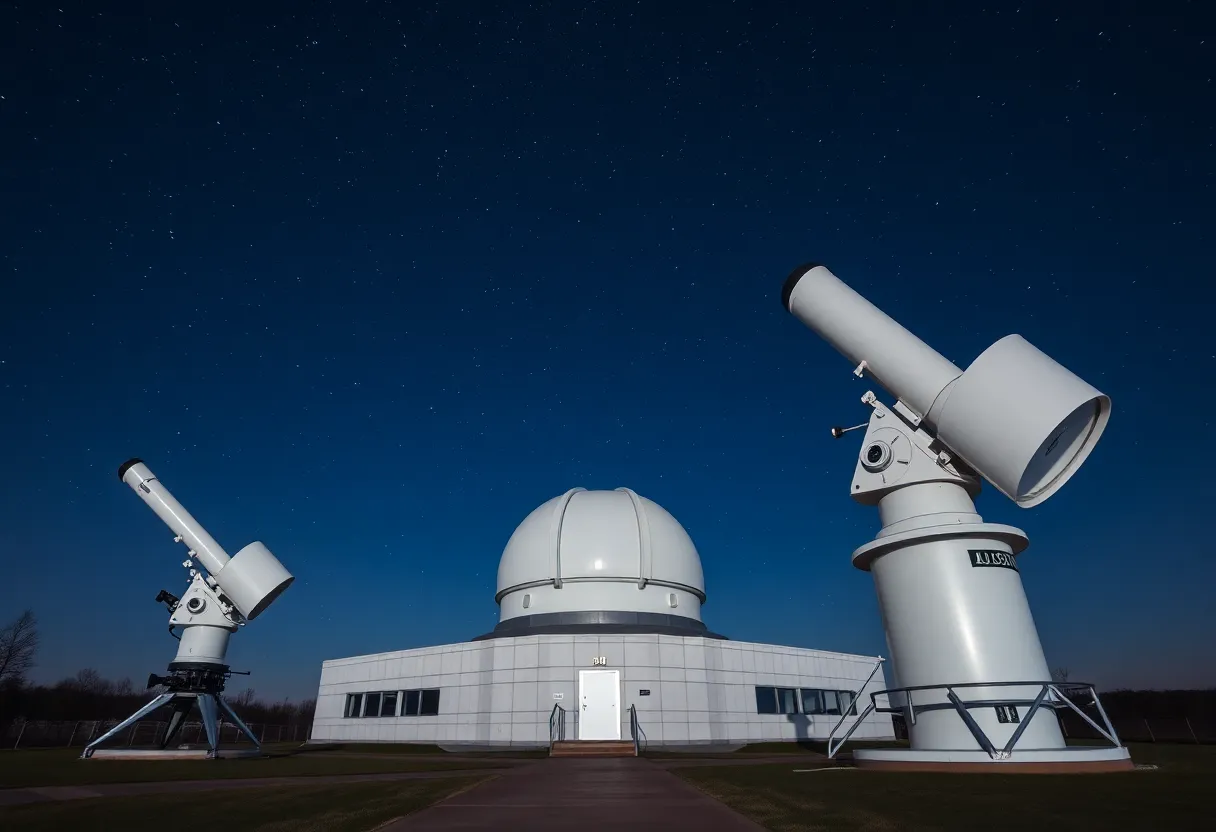Albuquerque, NM, October 17, 2025
The University of Albuquerque has announced the revival of its astronomy program after a $2 million donation from an anonymous alumnus. This funding will enhance the campus observatory with advanced telescopes for exoplanet research, allowing classes to resume next semester. The program aims to combine theoretical learning and hands-on experiences, engaging over 200 prospective students nationwide and hosting public stargazing events to foster community involvement in STEM education.
Albuquerque NM College University News: University Revives Astronomy Program with Major Donation
Albuquerque, NM – October 17, 2025: The University of Albuquerque has announced the revival of its long-dormant astronomy program following a $2 million donation from an anonymous alumnus. This funding will enable significant upgrades to the campus observatory, including the installation of state-of-the-art telescopes designed to detect exoplanets. The initiative marks a pivotal moment for the university’s science offerings and is set to resume classes next semester.
Program Upgrades and Educational Impact
The revived program will focus on equipping students with advanced tools for astronomical research. The new telescopes are expected to enhance capabilities in observing distant celestial bodies, particularly exoplanets beyond our solar system. This development addresses a gap in hands-on STEM education that has persisted since the program’s suspension years ago. Interest has surged, with over 200 prospective students from across the nation expressing intent to enroll. The curriculum will blend theoretical learning with practical applications, preparing participants for careers in astrophysics and related fields.
Classes are scheduled to begin next semester, allowing current students to integrate the new offerings into their academic plans. The university anticipates that this revival will attract a diverse group of learners, fostering innovation in space science education. Faculty members have outlined plans to incorporate cutting-edge methodologies, ensuring the program aligns with global standards in astronomical studies.
Community Engagement and Public Access
A key feature of the revived program involves hands-on stargazing events open to the public. These sessions aim to demystify astronomy for local residents, encouraging broader participation in STEM activities. By making the observatory accessible, the university seeks to build stronger ties with the Albuquerque community. Events will include guided tours and educational workshops, designed to inspire interest in space exploration among all age groups.
This community-oriented approach is expected to enhance public understanding of astronomical phenomena. Participants will have opportunities to use the upgraded equipment under expert supervision, promoting interactive learning outside traditional classroom settings.
Boost to Local Tourism and Economy
The revival has been welcomed by local educators as a positive force for New Mexico’s dark-sky tourism industry. Albuquerque’s proximity to pristine night skies positions the university’s observatory as an attractive destination for visitors seeking stargazing experiences. This could lead to increased tourism revenue, benefiting local businesses such as hotels and guided tour operators. The program’s emphasis on sustainable practices, including light pollution mitigation, aligns with efforts to preserve the region’s natural viewing conditions.
Research Collaborations and Safety Measures
Further expanding the program’s scope, collaborations with Los Alamos National Lab are planned. These partnerships will focus on advanced data analysis from telescope observations, potentially yielding breakthroughs in exoplanet research. Scientists from both institutions will share resources, accelerating the processing of complex astronomical datasets. This joint effort underscores the university’s role in regional scientific advancement.
Safety protocols form a cornerstone of the program’s operations. Measures to mitigate light pollution will include specialized lighting and site-specific environmental controls. These steps ensure that the observatory maintains high standards for both research accuracy and ecological preservation. The university has committed to regular assessments to uphold these protocols, safeguarding the integrity of observations and the surrounding environment.
Broader Cultural and Scientific Implications
This development enriches Albuquerque’s cultural landscape by establishing the university as a hub for astronomical research in the Southwest. The initiative not only revitalizes academic pursuits but also contributes to the area’s reputation as a center for scientific inquiry. With New Mexico’s unique astronomical assets, the program is poised to draw national attention, reinforcing the state’s commitment to STEM innovation.
In summary, the $2 million donation has catalyzed a comprehensive revival, from technological upgrades to community outreach. As classes resume and partnerships form, the University of Albuquerque’s astronomy program stands ready to illuminate new frontiers in education and exploration. This resurgence highlights the transformative impact of philanthropy on higher education, benefiting students, researchers, and the wider community alike.
FAQ
What is the source of funding for the University of Albuquerque’s revived astronomy program?
What upgrades will the donation support at the campus observatory?
When will classes for the astronomy program resume?
How many prospective students are interested in the program?
What community activities will the program offer?
How will this impact New Mexico’s tourism?
What collaborations are planned for the program?
What safety measures are included?
What broader role does this play in the region?
Key Features of the Revived Astronomy Program
| Feature | Description |
|---|---|
| Funding Amount | $2 million donation from an anonymous alumnus |
| Observatory Upgrades | State-of-the-art telescopes capable of detecting exoplanets |
| Class Resumption | Next semester, with over 200 prospective students nationwide |
| Community Engagement | Hands-on stargazing events open to the public, boosting STEM participation |
| Tourism Impact | Boost to New Mexico’s dark-sky tourism industry |
| Collaborations | With Los Alamos National Lab for advanced data analysis |
| Safety Protocols | Including light pollution mitigation for sustainable operations |
| Regional Role | Positions the university as a hub for astronomical research in the Southwest |





